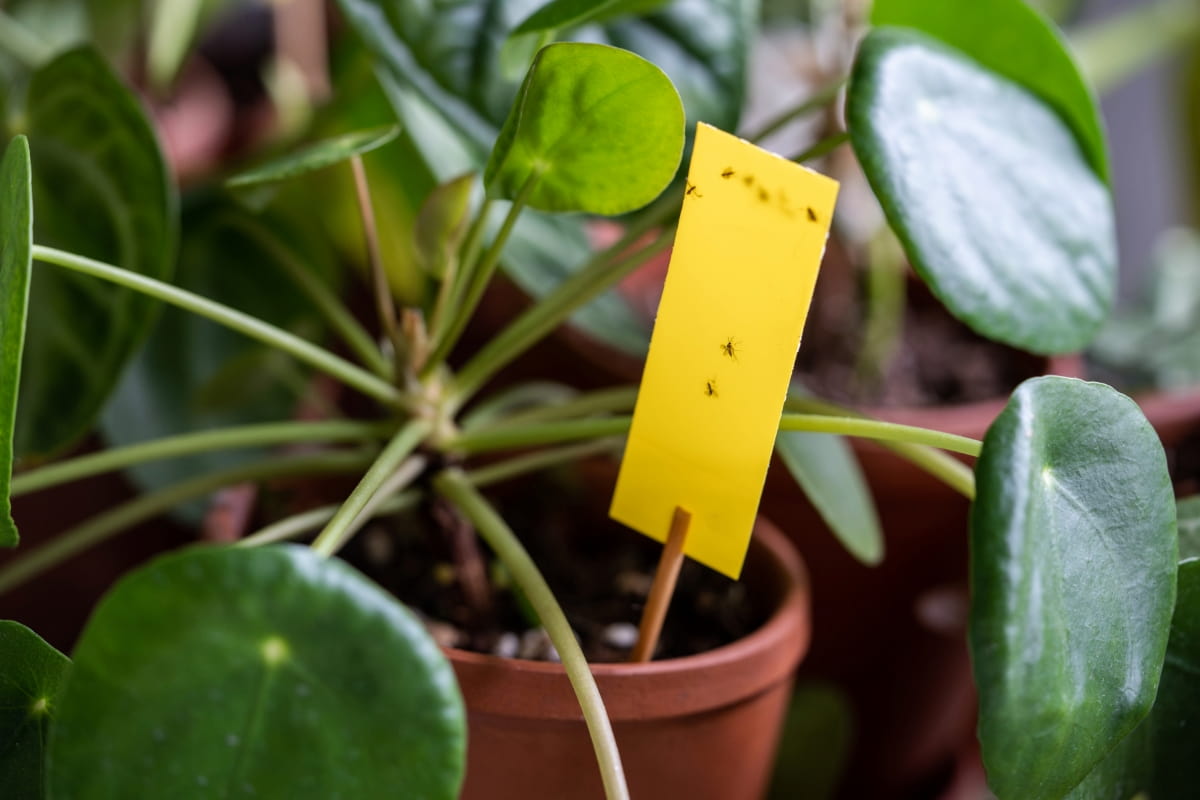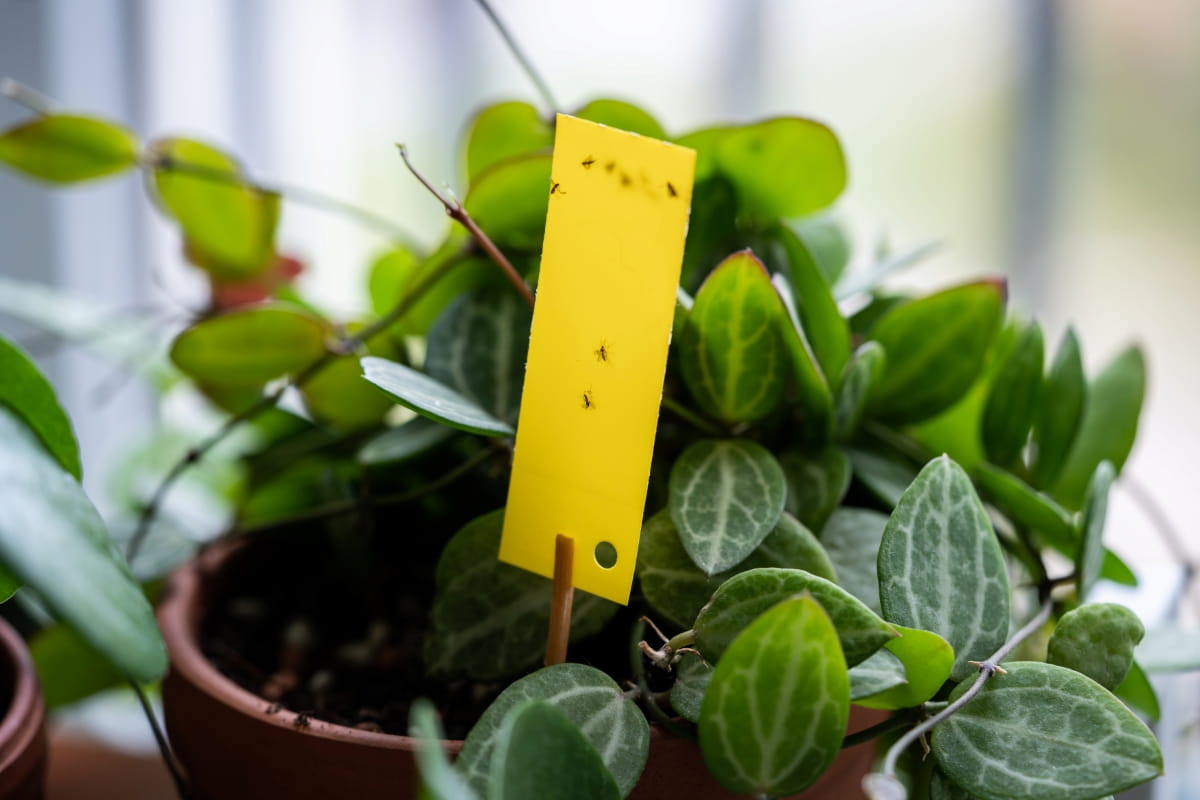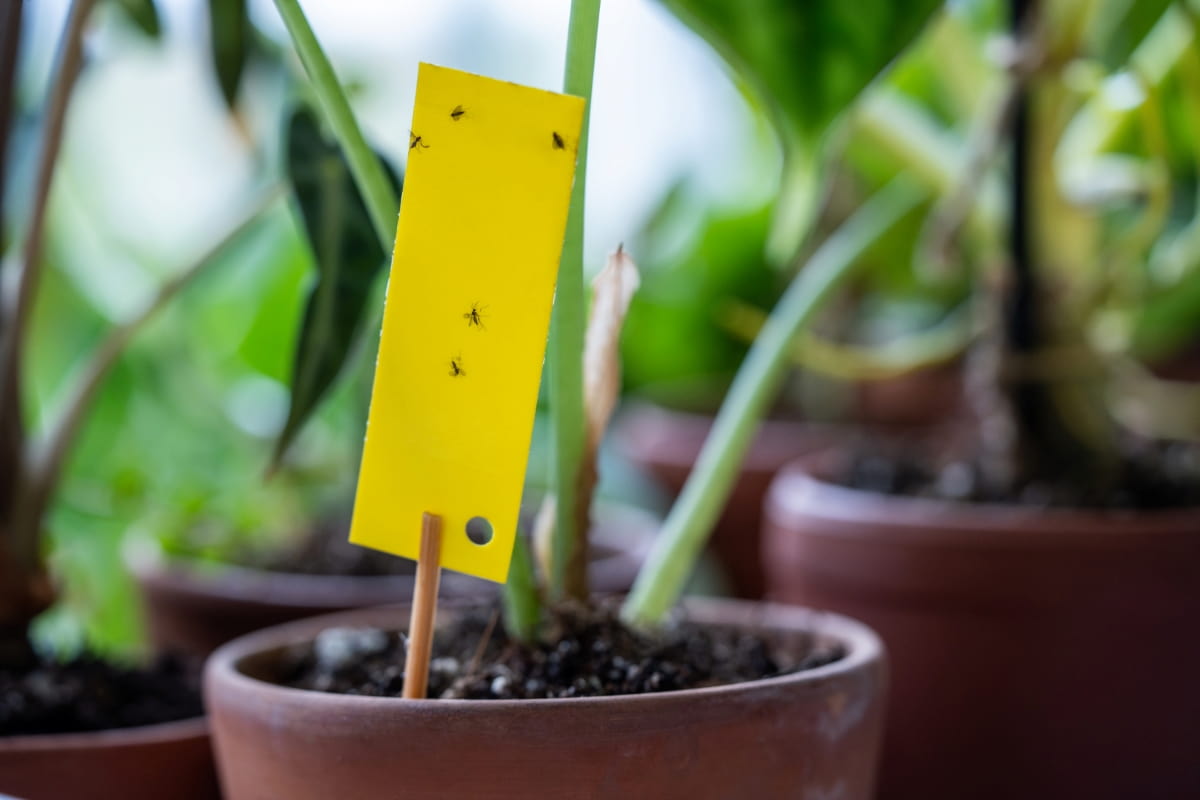Fungus gnats can wreak havoc on your precious plants and disrupt the overall health of your crops. These pesky creatures feed on the plant roots and lay their eggs in the soil, leading to root damage and stunted growth. Implementing effective prevention and management methods is essential for maintaining healthy plants and ensuring a successful harvest season.

How to Get Rid of Fungus Gnats
Understand Fungus Gnats
Fungus gnats, scientifically known as Bradysia spp., are tiny flying insects commonly found in greenhouses, indoor plants, and outdoor gardens. These pesky critters may seem harmless at first, but they can quickly become a nuisance and cause damage to your crops. To effectively control fungus gnats, it’s crucial to understand their behavior and habits. Identifying these pests is relatively easy due to their distinct appearance.
Adult fungus gnats are small, dark-colored flies with long legs. They have slender bodies and delicate wings that give them a mosquito-like appearance when flying around your crops. Controlling fungus gnat populations requires a multi-faceted approach that targets each stage of their life cycle. This includes using preventive measures like avoiding overwatering plants or improving drainage systems to reduce moisture levels in the soil.
Prevent Fungus Gnats with Effective Control Measures
The important step in preventing fungus gnats is maintaining proper sanitation practices. Remove any decaying plant material or organic debris from around your crops, as this provides an ideal breeding ground for fungus gnats. Another effective control measure is the use of yellow sticky traps. Place these traps strategically around your crop area to catch as many adults as possible.
Additionally, you can implement cultural controls, such as allowing the soil surface to dry out. Introducing beneficial nematodes into the soil can also help control fungus gnat populations. These microscopic worms feed on the larvae of fungus gnats, effectively reducing their numbers over time.
Identify Fungus Gnats: Characteristics and Behavior
The main characteristic of fungus gnats is their small size. These insects are typically less than 1/8 inch long with slender bodies and long legs. They have dark-colored wings that may exhibit a Y-shaped pattern when at rest. In terms of behavior, fungus gnats are attracted to moist environments where they lay their eggs. This is why they are often found in potted plants or areas with excessive moisture, like greenhouses or hydroponic systems.
The larvae feed on soil organic matter or growing medium, which can damage the roots of your crops. To further identify fungus gnats, keep an eye out for their distinctive flight patterns. They tend to hover around plants or fly erratically near the soil surface. Additionally, you may notice adult gnats swarming around light sources in the evening as they are attracted to bright lights.
Understanding the characteristics and behavior of fungus gnats is crucial for effective control strategies. By knowing what to look for and where they thrive, you can implement targeted measures that will help eliminate these nuisances from your crops without causing harm to beneficial organisms or compromising plant health.
Life Cycle of Fungus Gnats from Egg to Adult
Understanding the life cycle is crucial for effectively controlling these pests in crops. It all starts with the eggs, which are laid in moist soil or organic matter. These tiny, oval-shaped eggs are barely visible to the naked eye. After a few days, they hatch into larvae. The larvae have worm-like bodies and feed on decaying plant material and fungi found in the soil. As the larvae grow, they go through several developmental stages.
In case you missed it: Management of Fungal Diseases on Apple Trees: How to Control and Prevent with Natural and Organic Treatment

They molt their exoskeletons as they grow larger and continue to feed voraciously on organic matter. Once fully developed, the larvae pupate into adult fungus gnats. By understanding this complex life cycle of fungus gnats from egg to adult, growers can implement effective control strategies at each stage to prevent infestations and protect their crops from damage caused by these pesky insects.
Control Fungus Gnats with Strategies and Techniques
The main strategy is to focus on prevention. By implementing proper sanitation practices in your growing area, you can reduce the chances of fungus gnat infestations. Additionally, using clean pots and soil can help prevent the introduction of gnats into your crop environment. Another technique for controlling fungus gnats is the use of sticky traps. This method not only helps monitor the population but also aids in reducing their numbers over time.
Furthermore, utilizing biological controls such as beneficial nematodes or predatory mites can be highly effective against fungus gnats. However, it’s important to carefully follow instructions and choose products labeled specifically for fungus gnat control while minimizing harm to other beneficial organisms.
Fungus Gnat Infestation Signs and Symptoms
The main sign of a fungus gnat infestation is the presence of tiny, black flies buzzing around your plants. These pests are attracted to damp environments, so if you notice an increase in moisture or humidity levels near your crops, it could be a breeding ground for these pesky insects.
Another symptom to watch out for is yellowing or wilting leaves. Fungus gnats feed on organic soil matter, including plant roots. To effectively control a fungus gnat infestation, it’s important to address both adult flies and larvae. Implementing strategies such as reducing excess moisture by improving drainage and watering practices can help eliminate their breeding grounds.
Natural Remedies for Fungus Gnat Control
These remedies not only provide an effective solution but also ensure the health and safety of your plants. The effective method is using sticky traps or yellow sticky cards. These traps attract adult fungus gnats, preventing them from laying eggs on your plants. Maintaining proper watering practices is crucial in controlling fungus gnats. Incorporating beneficial bacteria like Bacillus thuringiensis var. israelensis (Bti) into your growing medium can effectively control gnat populations by targeting their larvae specifically.
Chemical Control of Fungus Gnats: Pros and Cons
The advantage of using chemical control is its quick and immediate impact. Chemical pesticides can effectively kill adult gnats and their larvae, providing fast relief from infestations. This can help prevent further damage to your crops and minimize the spread of diseases carried by these insects.
Another benefit is that chemical control methods are often readily available and easy to use. However, there are also some drawbacks associated with chemical control. The main concern is the potential harm they may cause to beneficial insects such as bees, butterflies, or ladybugs that play a crucial role in pollination or natural pest control. It’s essential always to follow label instructions carefully when using any chemical pesticide and take proper safety precautions.
Biological Control of Fungus Gnats: Using Predators
Instead of relying on chemicals that may have adverse effects on the ecosystem, introducing natural enemies can help keep these pests at bay. Several predators feed on fungus gnats and their larvae. One such predator is the Hypoaspis miles mite, also known as the predatory mite. These tiny creatures actively seek out fungus gnat larvae in the soil and consume them, effectively reducing their population.
In case you missed it: Management of Fungal Diseases in Terrace Gardens: How to Control and Prevent with Natural and Organic Treatment

Another natural predator that can be used for biological control is the rove beetle. This beetle feeds on both adult fungus gnats and their larvae, making it an efficient ally in managing infestations. The use of predators for fungal gnat control not only helps reduce their numbers but also disrupts their life cycle. Implementing a biological control program requires careful monitoring and proper management techniques.
Integrated Pest Management for Fungus Gnats
IPM combines various strategies and techniques to minimize the use of chemical pesticides while still effectively managing pest populations. The key component of IPM is prevention. By implementing preventive measures such as proper sanitation practices and using well-draining soil mixes, you can significantly reduce the occurrence of fungus gnat infestations.
If preventive measures are not sufficient and you still find yourself dealing with a fungus gnat problem, there are several natural remedies available that can be used alongside IPM techniques. These include using yellow sticky traps to catch adult gnats, applying insecticidal soap or neem oil sprays on affected plants, or incorporating biological controls.
Frequently Asked Questions (FAQ) on Fungus Gnats
What Causes Fungus Gnats?
Fungus gnats thrive in moist environments with organic matter. Overwatered plants and excessive moisture in the soil create the perfect breeding for these pests.
Can Cinnamon Help Eliminate Fungus Gnats?
Some people swear by cinnamon powder sprinkled on topsoil to deter gnat larvae from hatching due to its antifungal properties.
Should I Repot My Plant if it Has a Severe Gnat Infestation?
It’s often recommended to repot an affected plant into fresh soil that is properly drained, removing any decaying organic matter where the larvae might be residing.
In case you missed it: Managing Fungal Diseases in Ornamental Grasses: How to Control and Prevent with Natural and Organic Treatment

Conclusion
Fungus gnats may seem like harmless pests, but their presence in crops can have a significant impact. These pesky insects feed on organic matter and plant roots, which can affect stunted growth and reduce yields. By controlling their population, you’re ensuring that your crops have a better chance of thriving.
- Deworming Schedule for Dogs/Puppies: A Beginners Guide
- How to Prevent and Control Parasites in Goats
- Beneficial Insects in Pest Management
- Natural Solutions for Pest Control in Flower Gardens
- Types of Fungicides Used in Agriculture
- Common Issues in the Fruit Development Stage of Pomegranate Farming
- Fruit Development Issues in Papaya: Easy Solutions and Treatment
- Soil-Borne Diseases and How to Protect Your Plants
- Practices to Prevent Disease Spread in the Garden